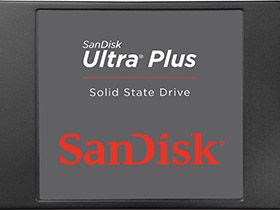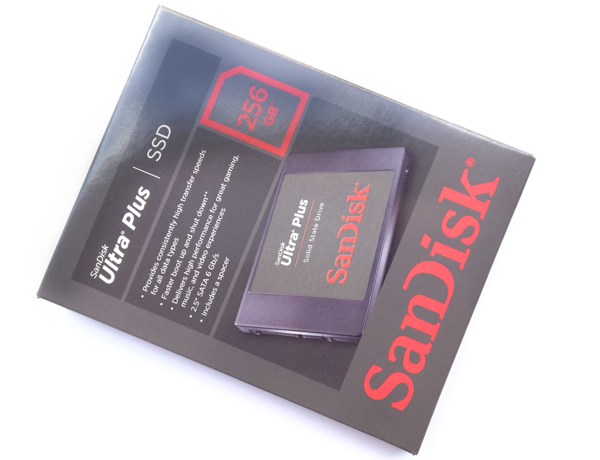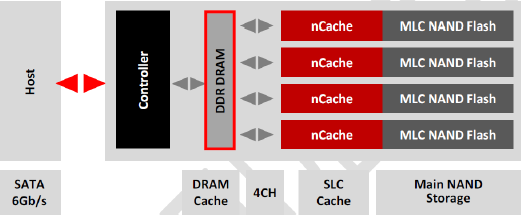Ssd Sandisk Ultra Plus 128 Go
SanDisk Ultra Plus SSD Reviewed At 64, 128, And 256 GB

SanDisk's Ultra Plus: Ballin' On A Budget
When you manufacture your own NAND, you tin can apply that special kind of knowledge liberally when the time comes to pattern your own SSDs. As i awarding engineer told me, "If I have a question nearly the flash, I can just walk downwardly the hallway and ask somebody." Less-endowed companies in the storage business don't have that luxury. Sadly, that puts a lot of the really low-level optimization out of accomplish for much of the SSD industry, which is unfortunate because some of the nigh interesting developments occur in that flash netherworld these days.
In an arrange-or-die marketplace, some of the solid-state middle course are taking steps to fight dorsum with strategic partnerships, firmware developments, and materials management to continue them competitive with the fabbed oligarchy. There is a shake-up coming, and nosotros've already seen tragic departures from a market deep in the throes of consolidation.
At the finish of the day, flash memory is the main ingredient of today's SSDs, and and then the companies with their own NAND manufacturing agree virtually of the cards. As a firm without a fab, you really demand some manner of competitive advantage or face the writing on the wall if y'all're making and selling SSDs. Either that, or hire Don Draper to come up with a wicked marketing strategy.

SanDisk is part of that admirer's club with access to its own NAND fabrication facilities. Thank you to a joint venture with Toshiba, SanDisk has the manufacturing capabilities to crank out flash. And being a flash-only organisation anyway, it has a adequately sassy intellectual property portfolio concerning solid-state storage. If the company'southward name doesn't resonate with yous equally an SSD purveyor, that's because nigh of its drives were historically sold to OEMs. The products we review are mostly part of a smaller retail segment, and for every drive we see, there are dozens more that terminate up in laptops, desktops, and servers.
Dorsum in the early on days, if yous bought a laptop with a proper SSD inside, odds were practiced that information technology came from SanDisk. Until recently, if you bought a retail SSD, it probably wasn't one of SanDisk's. That's a situation the California-based company hopes to change, thanks in part to its stash of patents, some competitive technology, and and a generous helping of NAND specialization. It doesn't fifty-fifty believe it needs its own controller. SanDisk does accept a proprietary processor, but the first couple of retail efforts employed SandForce's logic. Like several other companies playing the controller field, SanDisk uses several SSD processors to meliorate leverage its other strengths.

SanDisk's Ultra Plus is a fairly good example of that dynamic. Thank you to the company'southward NAND experience and some firmware prestidigitation, the Ultra Plus comes equipped with something SanDisk refers to as nCache. We beginning covered this technology in SanDisk Extreme II SSD Review: Hit At The Heavy-Hitters, but essentially, nCache is a arrangement that allows each MLC NAND device to comport similar single-level jail cell flash, resulting in higher performance, lower write distension, and improve endurance characteristics. SanDisk claims the effect is particularly helpful with fewer outstanding commands, thus giving the Plus a scrap more low-end grunt.
That's particularly important equally lithography shrinks, and features like nCache could aid wring the best longevity from the Ultra's nineteen nm Toggle-style NAND. nCache itself isn't and so new, but the engineering science certainly hasn't been a role of SanDisk's SandForce-based offerings. That controller doesn't allow the liberty to really optimize for deeper NAND integration. Without the power to tweak every inch of SandForce's firmware, you have to prefer a competing controller (or design your ain) to brand features like nCache work. Marvell's SSD processors are just the opposite. Whereas with SandForce, you're locked into a firmware package, Marvell's controllers require you to create your own, letting the designer run wild equally time and budget constraints permit.

The Ultra Plus is part of a design that originated from a lesser-known X110 SSD family unit, seen near exclusively in OEM applications. At its heart, y'all'll notice a Marvell 88SS9175 "Van Gogh Lite" controller. That item piece of silicon is very much like the more traditional eight-aqueduct 88SS9174 (used in products like Crucial'due south m4), except that it exposes only half the channels. The '9175 itself is used sparingly through the industry, residing in a handful of products from Lite-On and various custom applications.
Unsurprisingly, with but iv channels to worry well-nigh, power consumption drops significantly, if non profoundly. That's fine and well, but drives like Intel's X25-V used half-channel designs besides, and operation took a nose dive every bit a result. So, let's go this straight from the become-go: is SanDisk'south Ultra Plus a victim of a silly budget-driven design disaster?
Fortunately, no. The Ultra Plus ships in 3 capacities: 64, 128, and 256 GB. Each is capable of impressive numbers at the corresponding size levels, too. We obtained all iii to examination, so that will be the final estimate. Simply SanDisk ticks almost of the feature boxes for a value-oriented bulldoze.
| SanDisk Ultra Plus ii.5" SATA 6Gb/s SSD | 64 GB Ultra Plus | 128 GB Ultra Plus | 256 GB Ultra Plus |
|---|---|---|---|
| Controller | Marvell SS88 9175 -BJM2 | ||
| NAND | nineteen nm eX2 ABL (MLC) | ||
| Interface | SATA Revision 3.0 | ||
| Warranty | Three Years | ||
| Seq. Read/Write (ATTO) | 520/155 MB/due south | 530/290 MB/s | 530/445 MB/s |
| Random Read/Write (Iometer) | 76/29K IOPS | 80/33K IOPS | 82/39K IOPS |
| Weight | 38 g | 39 g | 40 one thousand |
| Die Count | 8 | xvi | 32 |
| Street Pricing | $65 | $95 to $99 | $165 to $175 |
The first thing we notice is that those sequential read and write specifications aren't what we'd expect from a upkeep drive. The 64 GB model sports numbers that any ONFi-based lx/64 GB SSD should green-eyed, while the 256 GB can conceivably write at a crushing 445 MB/s. 4-kilobyte random reads are quite spry as well, starting out at 76,000 IOPS for the junior fellow member and escalating with die count. The just hint nosotros go from the spec table that this SSD's origins are more apprehensive than some of the newer high-end SSDs is comparatively lower 4 KB random write performance. Perhaps it all depends on how you're testing the drive.
SanDisk'southward 64 GB Ultra Plus currently sells for just due north of $ane/GB. That makes it virtually fifty-fifty with the most affordable 64 GB drives on the market, though availability isn't as robust as the two larger Plus models. The 128 and 256 GB capacity points are far more competitive online, and sale pricing can tip the value calibration substantially in any one model'due south favor. It helps that there isn't much retail packaging to get in the fashion, since the box'due south contents are limited to the SSD, a 7 mm-to-9.v mm spacer, and a short multi-language guide.

Ssd Sandisk Ultra Plus 128 Go,
Source: https://www.tomshardware.com/reviews/ultra-plus-ssd-nand,3502.html
Posted by: mckenzienotilen.blogspot.com


0 Response to "Ssd Sandisk Ultra Plus 128 Go"
Post a Comment